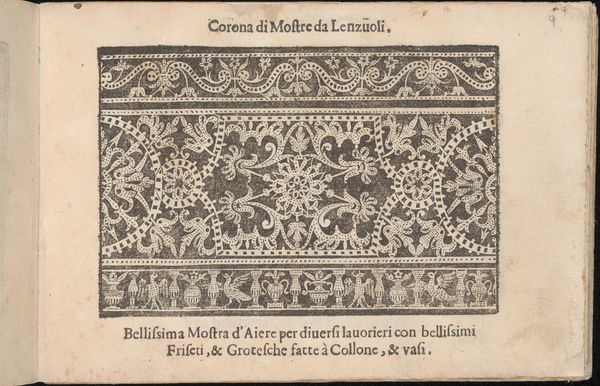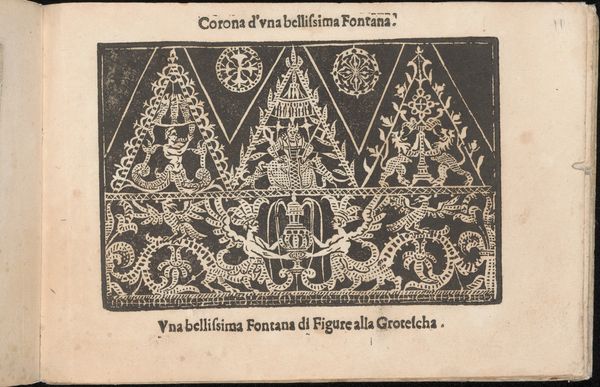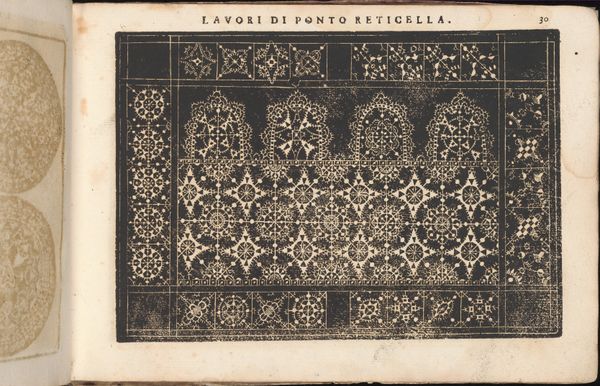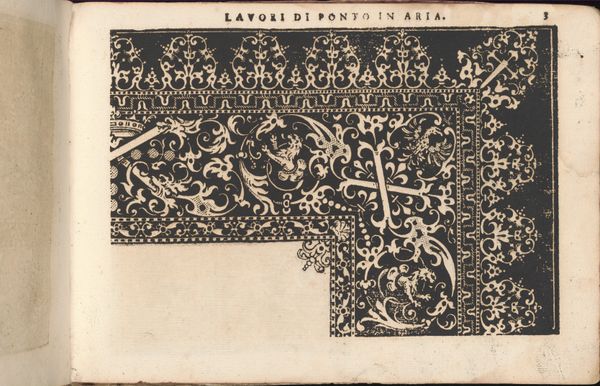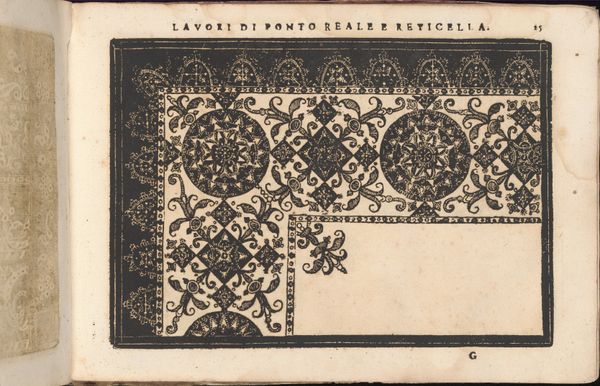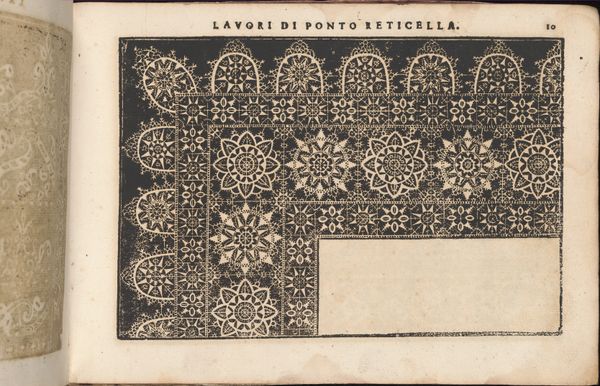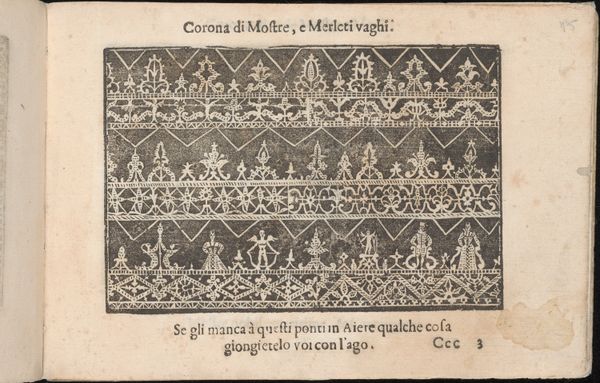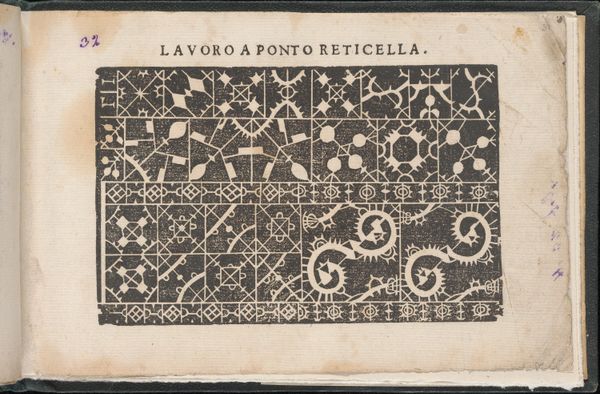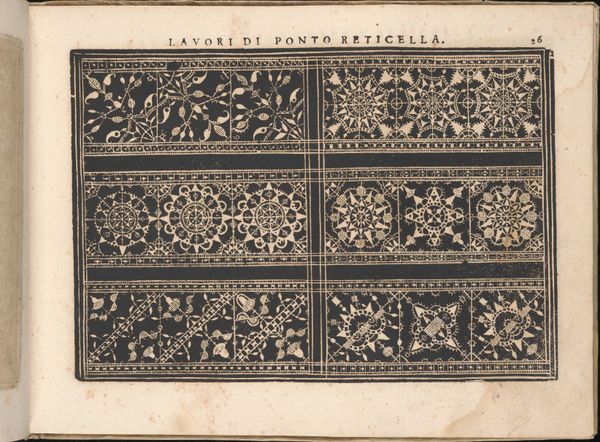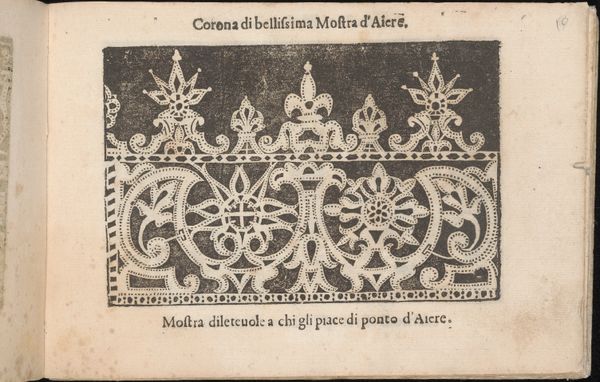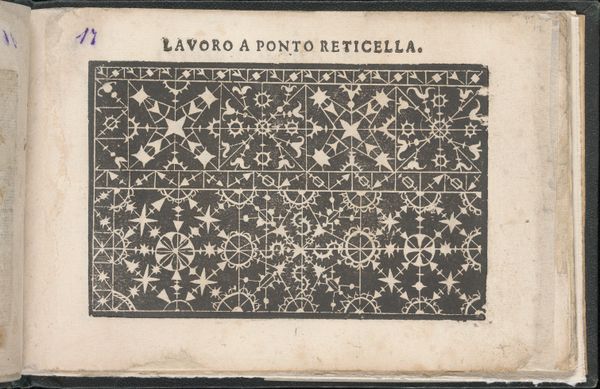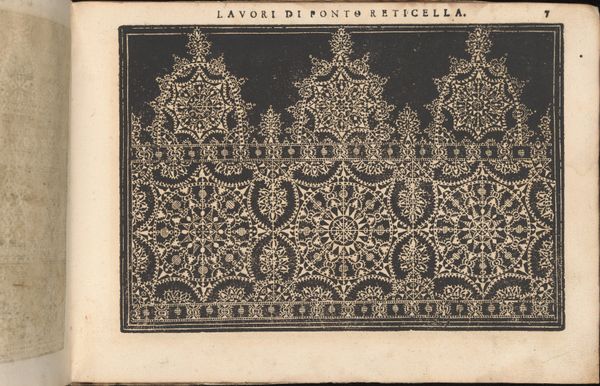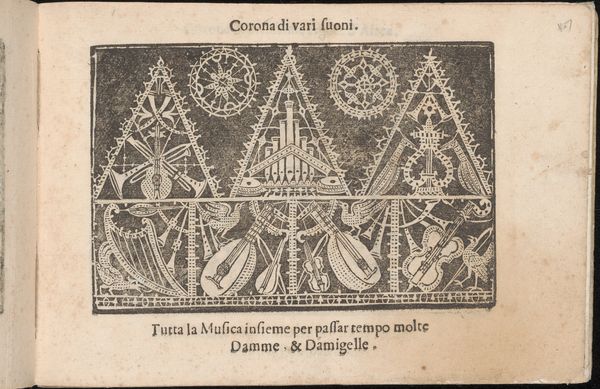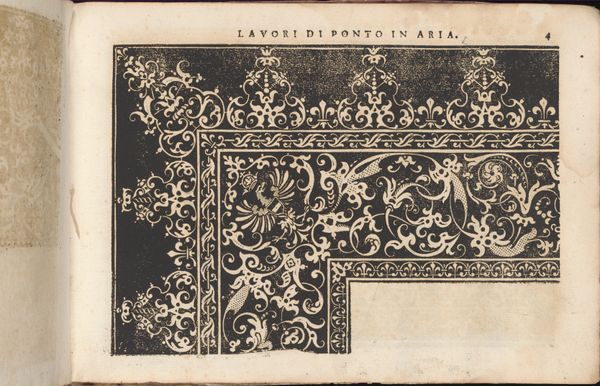
Corona delle Nobile et Virtuose Donne, Libro Terzo, page 3 (recto) 1620
drawing, graphic-art, print
drawing
graphic-art
Dimensions: Overall: 5 1/2 x 7 11/16 in. (14 x 19.5 cm)
Copyright: Public Domain
Curator: Cesare Vecellio created this page, number three, from "Corona delle Nobile et Virtuose Donne, Libro Terzo." It was published around 1620. Editor: Immediately, I think about a time capsule of intricate embroidery patterns frozen on the page. It's monochrome and sharply contrasting. Stark, almost. It seems like pure aesthetic intent. Curator: Absolutely. Think about what embroidery signified at the time. Beyond decoration, embroidery communicated status and taste. This pattern book showcases precisely such aspirations. Editor: Oh, so these are effectively status symbols laid out like...blueprints? It feels almost diagrammatic now you mention it. Each motif seems self-contained. A tiny universe to explore. What jumps out at you? Curator: The unicorn-like creature caught within an oval wreath at the top—a symbol deeply rooted in heraldry and purity. Its presence certainly elevated the craft. Also, observe the Greek inscription, highlighting a perceived cultural origin for the exquisite work. Editor: A unicorn, huh? Seems fitting given this is meant to be for “noble and virtuous women.” Almost as if to say: embody these ideals and manifest luxury with your needlework. But why Greek gentlewomen? Curator: The reference is partly an appeal to classical authority and skill. In other words, it lent the designs sophistication by association. Editor: It makes sense but also sounds like good marketing of its time, I mean! Now I want to go dig out grandma’s embroidery kit. And research unicorn sightings! Curator: A desire for the mythic embedded in something as tactile and domestic as embroidery...there's a certain poetic quality about it. Editor: It is amazing, isn’t it? To glimpse the threads connecting then and now through something seemingly as small as these patterns! Curator: Precisely. It’s in those detailed repetitions where we see shared meanings surface across the ages.
Comments
No comments
Be the first to comment and join the conversation on the ultimate creative platform.
